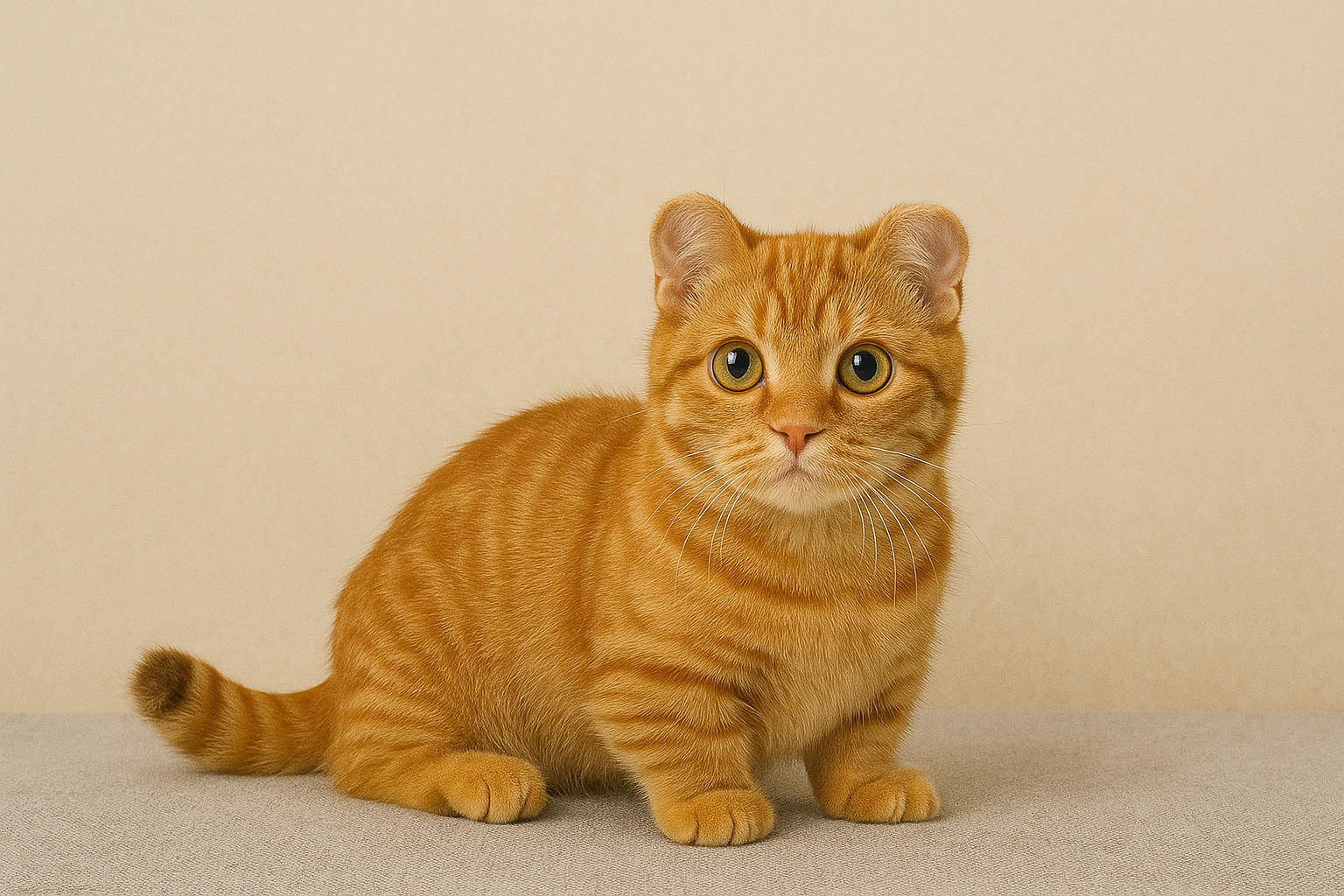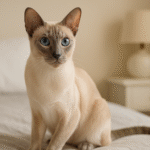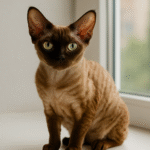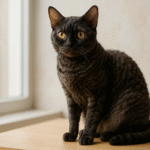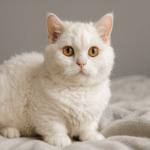With their short legs and adorably curled ears, the Kinkalow cat looks like something out of a cartoon. But don’t let their size fool you. This breed is full of playful energy and quirky charm. Kinkalows love to follow their humans around the house, curl up in laps, and turn even the most ordinary day into a cuddle fest.
If you want a cat that’s both unique and affectionate, the Kinkalow is a companion that fits right into your daily life and straight into your heart.
Quick Breed Facts
- Origin: United States
- Breed registries: TICA (Experimental); not yet fully recognized
- Weight range: 3–7 pounds
- Lifespan: 12–15 years
- Coat: Short to medium, soft and plush
- Colors and patterns: All colors and patterns accepted
- Eye color: Varies by coat color
- Grooming: Low to moderate
- Activity level: Playful but not overly energetic
- Affection level: Very affectionate
- Vocality: Quiet to moderately vocal
- Good with children: Yes
- Good with other pets: Yes, especially with proper socialization
History & Origin
The Kinkalow cat is a relatively new and rare hybrid that first appeared in the United States during the 1990s. Breeders combined the short-legged Munchkin with the curled-eared American Curl to create a small cat with a big personality and a truly one-of-a-kind look.
While the Kinkalow is still considered experimental, it is currently tracked by TICA breeders under their experimental breed program. Breeders and enthusiasts continue to work toward broader recognition in the cat fancy world.
Personality & Temperament
Kinkalows may be tiny, but their personalities are anything but small. These playful, curious cats are little clowns who always find ways to keep their humans entertained. They love attention and often follow their favorite people from room to room just to stay involved.
Kinkalows are also affectionate snuggle bugs, the kind of cats that curl up in your lap or perch on your shoulder. They do wonderfully with children and other pets, especially when introduced early, and their sweet, people-loving nature makes them a great fit for families or multi-pet homes.
Activity & Play
Kinkalows may have short legs, but they’re surprisingly agile and love to stay active. These little comedians enjoy interactive toys, feather wands, and anything that lets them stalk, chase, or pounce. Playtime is a daily must for this breed.
Because of their unique build, they might not leap as high as other cats. Cat trees with lower platforms or a set of pet steps can make it easier and safer for them to climb onto beds, couches, or their favorite perches.
Grooming & Shedding
The Kinkalow’s coat is usually short to medium in length with a soft, plush feel. Most of the time, a quick brushing once or twice a week is enough to keep their fur healthy and reduce shedding.
Some Kinkalows inherit a slightly longer coat from their American Curl side. If that’s the case, they might need a little extra brushing during seasonal shedding months. Even then, grooming is still easy and low-maintenance compared to many other breeds.
Health & Lifespan
Like many hybrid breeds, Kinkalows can inherit health risks from their parent lines. Because of their short legs, they may be more prone to joint or spinal issues such as lordosis or pectus excavatum. That said, most Kinkalows are healthy when bred responsibly and cared for properly.
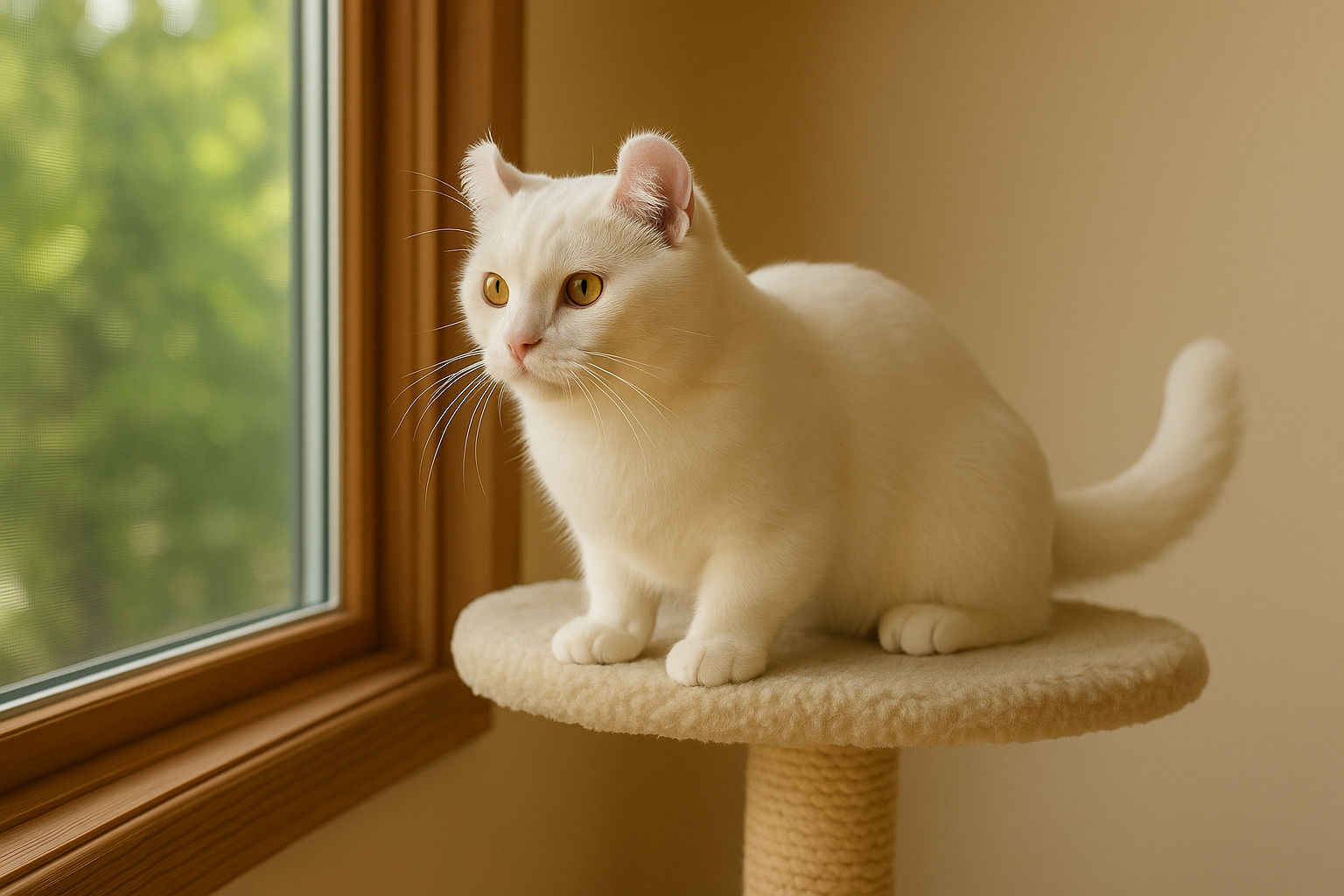
With regular checkups, a healthy diet, and a safe indoor lifestyle, Kinkalows usually live between 12 and 15 years. If you’re considering this rare breed, look for a breeder who prioritizes genetic testing and overall health, not just looks.
Family Compatibility
Kinkalows make wonderful companions for all kinds of families. Their small size makes them easy for kids to handle (with a little supervision), and their sweet nature helps them fit right into even a busy household. They thrive when they can be part of the daily action, whether that means snuggling on the couch or chasing toys across the floor.
These cats usually get along well with other cats and even friendly dogs, especially with slow, positive introductions. Their affectionate and easygoing personalities make them a great choice for single people, couples, and larger families alike.
Recommended Supplies
Because of their short legs, Kinkalows appreciate cat furniture and supplies designed with accessibility in mind. Ramps, lower-entry litter boxes, and soft beds are all great options to make their daily routine easier and more comfortable.
Kinkalow Cat FAQs
What is the personality of a Kinkalow cat?
Kinkalows are affectionate, playful, and full of curiosity. They love being near their people and are happy in homes with kids, other cats, or even friendly dogs.
Are Kinkalow cats hypoallergenic?
No. Kinkalows are not considered hypoallergenic, but some people with mild allergies report fewer symptoms because these cats have shorter coats and shed less than longhaired breeds.
How much do Kinkalow cats cost?
The Kinkalow cat price usually ranges from $1,500 to $3,000, depending on pedigree, breeder reputation, and where you live. Because this is a rare breed, kittens may be on waitlists, and you might need to travel to find a reputable breeder.
What does a Kinkalow kitten look like?
A Kinkalow kitten is irresistibly cute, with tiny legs and ears that start to curl back at around a week old. Their fuzzy coats and curious little faces make them especially charming to cat lovers.
Is the Kinkalow a recognized cat breed?
The Kinkalow is not yet fully recognized by major cat registries, but it is tracked as an experimental breed with TICA. Some smaller breed groups and breeders are working toward broader recognition in the cat fancy community.
Is the Kinkalow Cat Right for You?
The Kinkalow may be small, but it has a giant heart. With its curly ears, short legs, and lovable personality, this rare breed adds a special kind of joy to any home. They’re playful without being hyper and bring just the right amount of silly charm to keep you smiling.
If you want a cat that’s unique, affectionate, and always ready to make you laugh, the Kinkalow could be your perfect match.

